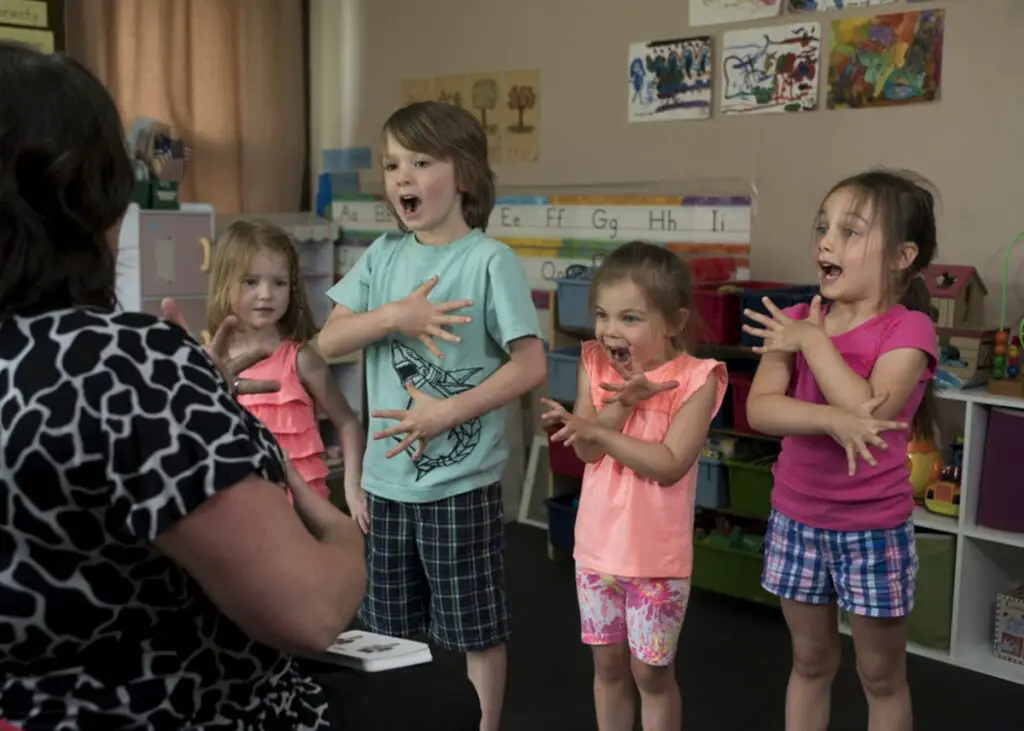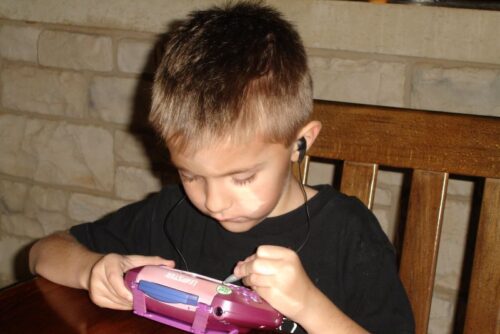Beyond Words: Exploring the Power of Nonverbal Autism
Imagine a world where words cannot be spoken, yet understanding is conveyed effortlessly. A realm where communication transcends the realms of speech and instead relies on the subtle nuances of body language, facial expressions, and gestures. Welcome to the world of nonverbal autism–a fascinating universe that challenges traditional notions of communication and invites society to explore alternative ways to connect.
 Nonverbal autism is a complex condition that affects individuals in various ways, making it crucial to understand its unique characteristics. While the absence of speech may be the most apparent aspect of nonverbal autism, there are numerous other communication challenges these individuals face. For instance, nonverbal autistic individuals may struggle with expressive communication skills such as gestures and facial expressions, making it difficult for them to convey their emotions and needs effectively.
Nonverbal autism is a complex condition that affects individuals in various ways, making it crucial to understand its unique characteristics. While the absence of speech may be the most apparent aspect of nonverbal autism, there are numerous other communication challenges these individuals face. For instance, nonverbal autistic individuals may struggle with expressive communication skills such as gestures and facial expressions, making it difficult for them to convey their emotions and needs effectively.
However, it is important to remember that nonverbal autism does not equate to lack of intelligence or understanding. Contrary to popular belief, many nonverbal autistic individuals have high cognitive abilities and can comprehend complex concepts. They simply possess different means of expressing themselves and understanding others. By recognizing this fact, supporters can develop new methods of communication that cater specifically to those who are nonverbal autistic, fostering better connections and enhancing their quality of life.
In order to truly support nonverbal autistic individuals, it is essential for us as a society to become more attuned and responsive to their unique non-verbal cues. A shift in perspective is needed – instead of perceiving their lack of speech as a deficit or limitation, caregivers, friends, and family should view it as an opportunity for creative expression through alternative forms of communication such as assistive technology or augmentative alternative communication (AAC) devices. By embracing these tools and techniques, new doors for connection and engagement can be opened with those who experience nonverbal autism.
Definition of Nonverbal Autism
Nonverbal autism is a term often used to describe individuals with autism who have limited or no verbal communication abilities. While it is important to note that not all individuals with autism who are nonverbal lack the capacity for language, their ability to use and understand spoken language is severely impaired. Instead, they may rely on alternative forms of communication such as sign language, pictorial symbols, or assistive technology devices.
It is crucial to remember that nonverbal autism does not equate to lack of intelligence or cognitive ability. Many individuals with this form of autism possess exceptional skills and talents in various areas. For instance, an individual might be exceptionally talented in art, music, mathematics, or computer programming while struggling with spoken language. This highlights the importance of recognizing and valuing the diverse abilities and strengths within the nonverbal autistic community.
By understanding the definition of nonverbal autism more deeply, we can challenge misconceptions and promote inclusivity for individuals who communicate differently.
Causes and Prevalence of Nonverbal Autism
Nonverbal autism, characterized by difficulty or inability to use verbal language to communicate, affects a significant number of individuals on the autism spectrum. While there is no exact known cause of nonverbal autism, it is believed to stem from a combination of genetic and environmental factors. The complexity and diversity of this disorder make it difficult to pinpoint a single cause for every person diagnosed with nonverbal autism.
Research suggests that the prevalence of nonverbal autism varies among different studies, but estimates range from 25% to 35% of individuals with Autism Spectrum Disorder (ASD). It is crucial to prioritize understanding and supporting individuals with nonverbal autism as their unique communication challenges often lead to increased frustration and isolation. While early intervention programs have made advancements in aiding communication for some individuals, there is still much work needed in providing effective strategies and tools for those who are unable or limited in their ability to use verbal language.
It is important not only for researchers but also society as a whole to recognize the causes and prevalence of nonverbal autism. By gaining deeper insights into potential causes, such as genetic markers or specific environmental triggers, more targeted interventions tailored explicitly for those affected by this form of Autism Spectrum Disorder can be developed. Providing support and inclusive environments that embrace alternative modes of communication can enable individuals with nonverbal autism to thrive while bridging the gap in understanding and acceptance.
Challenges Faced by Nonverbal Autistic Individuals
Nonverbal autistic individuals face unique challenges that can make communication and daily interactions a constant struggle. One of the main difficulties they experience is expressing their needs and wants effectively. Without the ability to use spoken language, a nonverbal autistic relies on alternative forms of communication such as sign language, visual aids, or assistive technology devices. However, these methods may not always be readily available or fully understood by others, leading to frustration and feelings of isolation.
Another significant challenge faced by nonverbal autistics is the misconceptions and stereotypes surrounding their condition. Many people assume that because they cannot speak, they lack intelligence or understanding. This often leads to exclusion from social activities and limited educational opportunities. In reality, nonverbal autistics are just as capable of learning and engaging with others as anyone else; they simply communicate in different ways. By challenging these assumptions and promoting inclusivity, society can create a more accepting environment for those individuals with nonverbal autism to thrive.
It is crucial to recognize the unique challenges faced by nonverbal autistic individuals. By providing them with alternative means of communication and working towards creating a more inclusive society, we can help alleviate some of the difficulties they face on a daily basis. It’s important for everyone to remember that being nonverbal does not mean being voiceless – every individual deserves to have their thoughts and feelings heard regardless of how they communicate them.
3 Key Communication Strategies for Nonverbal Autistics:
- Augmentative and Alternative Communication (AAC)
AAC refers to a range of techniques and tools that help individuals with limited or no speech to communicate effectively. This can involve the use of picture boards, communication apps on tablets or smartphones, or sign language. It is essential to determine the most suitable form of AAC for each individual based on their needs, preferences, and abilities. - Body Language and Facial Expressions
While verbal communication may not be possible for nonverbal autistics, it is crucial to recognize that they can still express themselves through body language and facial expressions. Caregivers, family members, and educators should pay close attention to these nonverbal cues as they can provide valuable insights into the individual’s desires, emotions, or needs.Developing an understanding of an individual’s unique nonverbal language is key in building effective communication strategies.
- Visual Supports
Visual supports such as visual schedules and social stories can greatly enhance communication for nonverbal autistics. These tools allow individuals to anticipate daily routines or upcoming events visually, reducing anxiety and providing structure.Social stories use simple visuals combined with written text to explain various social situations in a straightforward way that can better be understood by nonverbal autistics.
Remember that each nonverbal autistic person is unique in their needs and communication preferences – what works for one individual may not work for another.
Assistive Technology and Support for Nonverbal Autistics
 Assistive technology has revolutionized the lives of nonverbal autistics, providing them with a means to communicate and interact with the world around them. From high-tech devices to low-tech tools, there is a wide range of assistive technology options available.
Assistive technology has revolutionized the lives of nonverbal autistics, providing them with a means to communicate and interact with the world around them. From high-tech devices to low-tech tools, there is a wide range of assistive technology options available.
Augmentative and alternative communication (AAC) systems, for example, utilize speech-generating devices or picture-based communication boards to enable individuals who are unable to speak to convey their thoughts, needs, and emotions. These technologies not only give nonverbal autistics a voice but also empower them to express their unique perspectives and participate more fully in their communities.
In addition to AAC systems, supportive strategies such as social narratives and visual schedules have proven invaluable in assisting nonverbal autistics with daily routines and tasks. Social narratives provide step-by-step instructions accompanied by visuals that help individuals navigate social situations that may be challenging or unfamiliar. This form of support offers structure and predictability while reducing anxiety levels commonly experienced by nonverbal autistics in ambiguous social scenarios.
Visual schedules have also proven effective in helping individuals manage transitions between activities or understand upcoming events by providing clear visual cues that serve as guides for expected behaviors.
The advancements in assistive technology continue to enhance the quality of life for nonverbal autistics by promoting improved communication skills, fostering independence, and facilitating meaningful connections with others. As technology continues to evolve rapidly, it is vital for educators, caregivers, and practitioners working with this population to stay updated on the latest innovations available.
Nonverbal Autism and AI Support
Nonverbal individuals with autism face significant challenges in communication and social interaction. However, advancements in Artificial Intelligence (AI) offer a renewed sense of hope and support for this community. Recent developments have shown promising results in using AI technologies to assist nonverbal individuals with expressing their thoughts, emotions, and needs.
One particular area where AI has made notable progress is in the development of wearable devices that can detect and interpret nonverbal cues. These devices utilize advanced algorithms to analyze facial expressions, body language, and other subtle gestures that are often missed or misunderstood by others.
By accurately interpreting these nonverbal cues, AI technology can help bridge the communication gap between nonverbal individuals and neurotypical individuals, facilitating more meaningful interactions.
AI-powered apps specifically designed for nonverbal individuals are emerging as valuable tools for learning and self-expression. These apps incorporate features such as symbol-based communication systems or picture exchange programs to facilitate communication between nonverbal individuals and their environment. Through intuitive user interfaces and personalized support, these apps empower nonverbal autism users to express themselves creatively while fostering a sense of independence.
The integration of nonverbal autism and AI not only addresses the unique challenges faced by nonverbal autistics but also opens up new horizons for inclusive communication. With continual advancements in AI technology, neurodiverse individuals with any kind can look forward to a future where verbal impairments no longer limit one’s ability to connect with others effectively.
10 Top Ways to Support and Assist Nonverbal Autistics
 While every individual on the spectrum with autism is unique and requires an individualized approach, there are some general strategies and advice that can be valuable if navigating this journey on nonverbal autism.
While every individual on the spectrum with autism is unique and requires an individualized approach, there are some general strategies and advice that can be valuable if navigating this journey on nonverbal autism.
Here are some tips to help support nonverbal autistics in a nurturing manner. While these suggestions are child-focused for parents and caregivers, the ideas can be applied to an adult or teen with nonverbal autism as well.
- Encourage Alternative Forms of Communication
Communication is essential, especially for nonverbal individuals with autism.Encouraging and supporting alternative forms of communication can significantly impact your child’s development and overall well-being. While verbal communication may be limited, explore and introduce alternative methods such as sign language, picture exchange systems (PECS), or assistive communication devices. These tools can provide a means for your child to express their needs, wants, and feelings effectively. Consult with a speech-language therapist who specializes in augmentative and alternative communication (AAC) to determine the best approach for your child.
- Create a Structured and Predictable Environment
Children with autism often thrive in structured environments that provide predictability and routine. Establish clear schedules and consistent routines to help your child understand what to expect throughout the day.Visual aids like visual schedules or social stories can be beneficial in making daily activities more predictable and less overwhelming for your child. Use visual cues, such as pictures or written words, to represent different activities and transitions. This visual support can help your child navigate their day with greater ease and reduce anxiety.
- Seek Professional Support
Collaborating with a team of professionals who specialize in working with individuals with autism is vital in supporting your child’s growth and development. Speech-language therapists, occupational therapists, and behavior analysts can provide valuable guidance and interventions tailored to your child’s specific needs.A speech-language therapist can work on communication strategies, while an occupational therapist can address sensory issues and help develop skills for daily living. Behavior analysts can assist in managing challenging behaviors and implementing behavior support plans. Together, they can create a comprehensive plan to enhance your child’s overall well-being.
- Foster Social Connections
Facilitating social interactions is crucial for children with autism, including those who are nonverbal. While the absence of verbal communication may pose challenges, there are various ways to encourage socialization and build connections.Arrange playdates with peers who understand and accept your child’s unique communication style. Group therapy sessions or participation in community programs designed for children with special needs can provide valuable social opportunities. Encourage interactions with siblings and other family members, creating an environment that fosters inclusivity and understanding. These experiences can help develop social skills, promote empathy, and foster friendships.
- Embrace Sensory Sensitivities
Sensory sensitivities are common among individuals with autism. Your child may have unique preferences and aversions when it comes to sensory experiences. Pay attention to your child’s reactions to different stimuli and adapt their environment accordingly. Create a sensory-friendly space by considering factors such as lighting, noise levels, and tactile experiences.Adjust the lighting to reduce glare, provide ear defenders or noise-cancelling headphones to manage auditory sensitivity, and introduce sensory activities like swings, weighted blankets, or fidget toys that can provide comfort and regulation. By addressing sensory sensitivities, you can help your child feel more at ease and promote their overall well-being.
- Practice Patience and Understanding
Raising a nonverbal child with autism can be challenging at times, but it’s important to approach each day with patience and understanding. Celebrate small victories, be patient with setbacks, and remember that progress may take time. Your child’s journey is unique, and they may have their own pace of development.Show empathy, provide unconditional love, and create a safe space where your child can express themselves in their own unique way. Patience and understanding will not only benefit your child but also support your own well-being as a parent.
- Encourage Self-Expression and Independence
Empowering your nonverbal child to express themselves and develop a sense of independence is essential for their overall well-being. Provide them with opportunities to make choices and participate in decision-making processes, even if it’s as simple as selecting a preferred snack or activity.Encourage self-expression through art, music, or other creative outlets that align with their interests. Nonverbal children with autism often have unique perspectives and talents waiting to be discovered. By fostering their self-expression and independence, you are helping them build confidence and a sense of identity.
- Create a Communication-Rich Environment
While verbal communication may be limited, it is crucial to create a communication-rich environment that encourages interaction and engagement. Use visual supports, such as labeled objects, to help your child associate words with their corresponding items.Incorporate visual aids into daily routines, such as a morning routine chart or a mealtime visual guide, to enhance comprehension and communication. Narrate your actions and provide simple explanations during daily activities to facilitate understanding and language acquisition.
Additionally, engage in activities that promote turn-taking, such as playing board games or engaging in pretend play, to encourage communication and social interaction.
- Build a Supportive Network
As a parent of a nonverbal child with autism, it’s important to build a supportive network of individuals who understand and can offer support during your journey. Connect with other parents who have similar experiences through local support groups, online communities, or social media platforms.Sharing stories, advice, and resources can provide you with a sense of camaraderie and valuable insights. Additionally, consider involving extended family members, close friends, and educators in your child’s support network. Educate them about your child’s unique needs and communication methods to foster understanding and support.
- Prioritize Self-Care
Raising a child with autism, particularly a nonverbal child, can be demanding both emotionally and physically. It is essential to prioritize self-care to ensure you have the energy and resilience to support your child effectively.Take time for yourself to engage in activities that bring you joy and help you recharge. Seek support from your partner, family members, or trusted friends to share the responsibilities of caregiving. Consider joining support groups for parents of children with autism, where you can find solace, guidance, and a space to share your experiences.
Remember, taking care of yourself is not selfish; it is an investment in your well-being and your ability to provide the best possible care for your child.
My Communications Journey

Personally, I was never a nonverbal child; however, it took me longer to say my first words. I was told I was considered “speech delayed” and while I was a kid who spoke less often than others, it wasn’t the same level as being a nonverbal autistic (remember, I did not receive my diagnosis of having Asperger’s syndrome until I was in middle school). I am told I was quiet and a “little boy of few words,” often preferring to use electronics over conversations.
Looking back, I realize that being light on communication was a little more difficult than a neurotypical child, but it’s never been a serious issue. However, if I was completely nonverbal I know my parents would have accepted me and worked with me and I truly appreciate that.
Raising a nonverbal child with autism requires a multifaceted approach that encompasses alternative communication methods, a structured environment, professional support, social connections, sensory sensitivity considerations, patience, self-expression, and self-care. By embracing these strategies, parents can create a nurturing and supportive environment where their child can thrive and reach their full potential.
Each child’s journey is unique, and it is crucial to adapt these recommendations to suit a nonverbal autistic’s specific needs. Celebrate every milestone, no matter how small, and embrace the remarkable progress and growth your loved one (child or adult) demonstrates along the way. With love, patience, and unwavering support, you can provide your nonverbal child with autism the foundation that is needed to lead a fulfilling and meaningful life.
And always remember: It’s important for everyone to remember that being nonverbal does not mean being voiceless – every individual deserves to have their thoughts and feelings heard regardless of how they communicate them.
Additional Challenges Individuals with Autism Face
Learn more about other issues that autistics face:
- New Research Reveals Autism Mental Health Linked to These Disorders
- Feeling Left Out: 12 Ways to Conquer Ostracism When You Have Autism
- Is Autism a Disability? Surprising Reasons for the Debate
- Boredom Busters: Why Bored With Life Can Actually Be A Good Thing
- Autism and Holidays: Why Special Occasions Can Be Challenging
- 6 Fascinating Facts About Autism You Probably Didn’t Know
- 8 Popular Ways to Manage and Master Autistic Social Awkwardness
- Autism and Poor Hygiene: The Smelly Truth to Overcome
- Anxiety and Autism: 5 Powerful Strategies to Conquer Emotions
- Growing Up Autistic: How I Overcame Challenges and Now Thrive
- 6 Ways to Tackle Autism Fireworks Anxiety and Sensory Overload
- Autism Family Support: 5 Ways to Achieve A Happy Household35